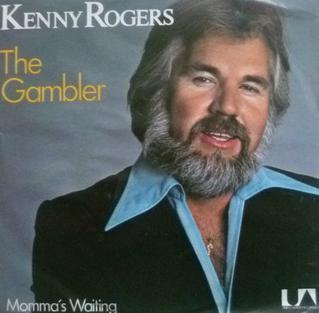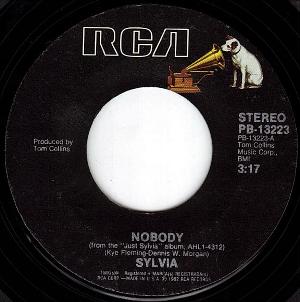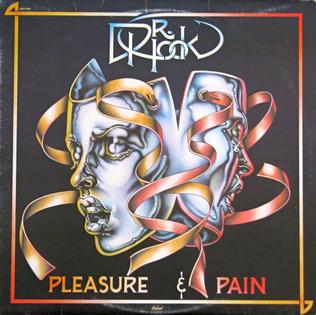
Sheldon Allan Silverstein was an American writer, poet, cartoonist, singer-songwriter, musician, and playwright. Born and raised in Chicago, Illinois, Silverstein briefly attended university before being drafted into the United States Army. During his rise to prominence in the 1950s, his illustrations were published in various newspapers and magazines, including the adult-oriented Playboy. He also wrote a satirical, adult-oriented alphabet book, Uncle Shelby's ABZ Book.

"A Boy Named Sue" is a song written by humorist, children's author, and poet Shel Silverstein and made famous by Johnny Cash. Cash recorded the song live in concert on February 24, 1969, at California's San Quentin State Prison for his At San Quentin album. Cash also performed the song in December 1969 at Madison Square Garden. The live San Quentin version of the song became Cash's biggest hit on the Billboard Hot 100 chart and his only top ten single there, spending three weeks at No. 2 in 1969, held out of the top spot by "Honky Tonk Women" by The Rolling Stones. The track also topped the Billboard Hot Country Songs and Easy Listening charts that same year and was certified Gold on August 14, 1969, by the RIAA.

Robert Joseph Bare Sr. is an American country singer and songwriter, best known for the songs "Marie Laveau", "Detroit City" and "500 Miles Away from Home". He is the father of Bobby Bare Jr., also a musician.

Dr. Hook & the Medicine Show is an American rock band, formed in Union City, New Jersey. The band had commercial success in the 1970s with hit singles "Sylvia's Mother", "The Cover of 'Rolling Stone'", "Only Sixteen" (1975), "A Little Bit More" (1976), "Sharing the Night Together" (1978), "When You're in Love with a Beautiful Woman" (1979), "Better Love Next Time" (1979), and "Sexy Eyes" (1980). In addition to its own material, Dr. Hook and the Medicine Show performed songs written by the poet Shel Silverstein.

"Delta Dawn" is a song written by musician Larry Collins and country songwriter Alex Harvey. The first notable recording of the song was in 1971 by American singer and actress Bette Midler for her debut album. However it is best known as a 1972 top ten country hit for Tanya Tucker and a 1973 US number one hit for Helen Reddy.

"Let's Go" is a song by American rock band the Cars, written by Ric Ocasek for the band's second studio album, Candy-O (1979). A new wave rock song, the song's hook was inspired by the Routers. The song's vocals are performed by bassist Benjamin Orr.

"The Gambler" is a song written by Don Schlitz and recorded by several artists, most famously by American country singer Kenny Rogers.

"Walk Right In" is a country blues song written by musician Gus Cannon and originally recorded by Cannon's Jug Stompers in 1929 by RCA Victor. In 1959, it was included on the compilation album The Country Blues. Another version of the song by the Rooftop Singers, with the writing credits allocated to group members Erik Darling and Bill Svanoe, became an international hit in 1963.
"The Ballad of Lucy Jordan" is a song by American poet and songwriter Shel Silverstein. It was originally recorded in 1974 by Dr. Hook & the Medicine Show, with the name spelled "Jordon". The song describes the disillusionment and mental deterioration of a suburban housewife, who climbs to a rooftop "when the laughter grew too loud".

"Nobody" is a song written by Kye Fleming and Dennis Morgan, and recorded by American country music artist Sylvia. It was released in June 1982 as the second single from the album Just Sylvia.

"A Little Bit More" is a song written and performed by American musician Bobby Gosh, released on his 1973 album Sitting in the Quiet. American rock band Dr. Hook recorded the first hit version which was released as a single in 1976. It charted at number 11 on the US Billboard Hot 100 and spent two weeks at number nine on the Cash Box Top 100. It reached number two on the UK Singles Chart in July 1976 for five consecutive weeks, being held from the top spot by Elton John and Kiki Dee's "Don't Go Breaking My Heart". It was Dr. Hook's joint second-best UK chart placing, matching "Sylvia's Mother" and surpassed only by "When You're in Love with a Beautiful Woman".

"The Long Run" is a song written by Don Henley and Glenn Frey and recorded by the Eagles. The sound of the song is viewed as a tribute to the Stax / Memphis rhythm and blues sound. It was the title track of their album The Long Run and was released as a single in November 1979. It reached No. 8 on the U.S. Billboard Hot 100 in early 1980. It was the second of three singles released from The Long Run album, preceded by "Heartache Tonight," which reached No. 1 on the Billboard Hot 100 in November 1979, and followed by "I Can't Tell You Why," which also reached No. 8 on the Billboard Hot 100, in the spring of 1980.

Sloppy Seconds was the second album from the country rock band Dr. Hook & the Medicine Show. It featured some of their most popular songs, including "Freakin' at the Freakers Ball" and "The Cover of Rolling Stone." It was noted for its "crude sense of humor."

"The Cover of 'Rolling Stone'" is a song written by Shel Silverstein and first recorded by American rock group Dr. Hook & the Medicine Show. Produced by Ron Haffkine and released in 1972, it was the band's third single and peaked at No. 6 on the U.S. pop chart for two weeks on March 17–24, 1973. The song satirically laments that the band had not appeared on the cover of the Rolling Stone, a magazine that focuses on music, politics, and popular culture. The song's success led to the band appearing on the cover of Rolling Stone in 1973, albeit in caricature.

"Marie Laveau" is a song written by Shel Silverstein and Baxter Taylor. First recorded by Dr. Hook & The Medicine Show on their 1971 album Doctor Hook, a 1974 live recording by Bobby Bare went to number one for a single week and spent a total of 18 weeks on the country charts. It was his 34th single on the charts, his only number one and final top ten country hit.

"Oh Babe, What Would You Say" is a song by record producer Hurricane Smith, written by his wife Eileen Sylvia Smith, and released in the US by Capitol Records in March 1972. It was a transatlantic hit, becoming a US No. 1 Cash Box and a Billboard Pop No. 3 hit, No. 3 in the Canadian RPM Magazine chart, and No. 4 in the UK Singles Chart.
Ron Haffkine was an American record producer, composer and music manager most recognized for his work as a producer and manager of Dr. Hook & the Medicine Show, an American rock band, producing hit singles including "Sylvia's Mother", "The Cover of Rolling Stone", "Sharing the Night Together", "A Little Bit More" and "When You're in Love with a Beautiful Woman" and achieving 67 Gold and Platinum records.

Pleasure and Pain is the seventh album from the country rock band Dr. Hook & The Medicine Show. It featured two U.S. Top 10 hits, "Sharing the Night Together" and "When You're in Love with a Beautiful Woman." Both songs also became chart hits in the UK, Canada and Australia.

Doctor Hook, later released as Sylvia's Mother, is the debut studio album by American country rock band Dr. Hook & the Medicine Show, released in 1972.
"Boa Constrictor" is a song written by Shel Silverstein and originally featured on his 1962 album Inside Folk Songs.

















